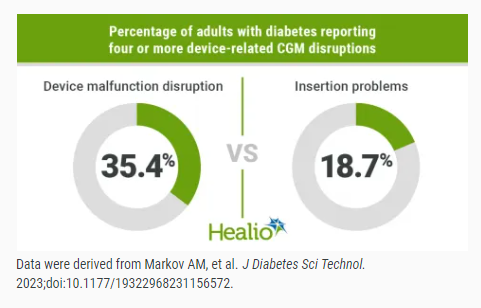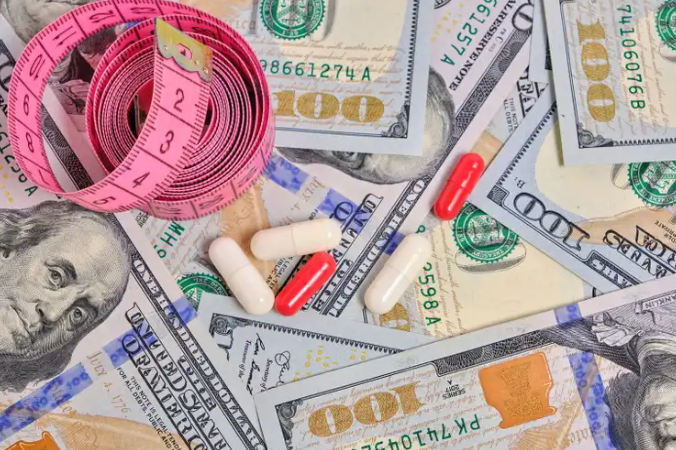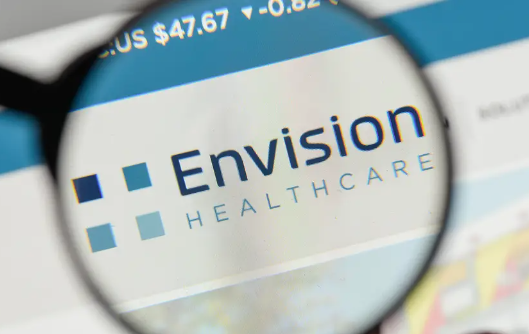Most adults with diabetes report CGM disruptions due to device problems, medical care by Alexis McKee for Healio.com/endocrinology, 3 May 2024.
 More than 80% of adults with diabetes using continuous glucose monitoring reported at least one instance of needing to stop using their device due to medical care or a device-related problem, according to survey findings. “CGM disruption is the rule rather than the exception,” said Alexis M. McKee, MD, CDCES, assistant professor of medicine at Washington University School of Medicine in St. Louis. “The vast majority of individuals using CGM are not getting the full wear time out of every CGM sensor.”
More than 80% of adults with diabetes using continuous glucose monitoring reported at least one instance of needing to stop using their device due to medical care or a device-related problem, according to survey findings. “CGM disruption is the rule rather than the exception,” said Alexis M. McKee, MD, CDCES, assistant professor of medicine at Washington University School of Medicine in St. Louis. “The vast majority of individuals using CGM are not getting the full wear time out of every CGM sensor.”
McKee and colleagues conducted a retrospective survey of adults attending the Washington University/Barnes-Jewish Hospital Diabetes Center with type 1 or type 2 diabetes who use CGM. Demographics, the number of CGM disruptions and adverse events related to device disruptions occurring in the past year were collected. CGM disruptions were defined as device removal for the purpose of receiving medical care or any discontinuation of wear that was linked to a device malfunction, displacement or insertion problems. The study was published in the Journal of Diabetes Science and Technology.
McKee said there are several actions providers can take to reduce the frequency of CGM disruption for people with diabetes.
-
-
- “Providers can reinforce proper insertion techniques and approved adhesives in addition to ensuring that patients know to contact the manufacturer to obtain a replacement CGM,” McKee said. “Unfortunately, providers are not able to prescribe additional CGM sensors at this time.”
- McKee added that the frequency of CGM disruptions in the study should lead to more advocacy for CGM prescriptions to include an extra one-time refill.
-
 I’ve, personally, noticed significantly more failures in the past 6 months. I put out a poll in one of my large, CGM-using Facebook groups … about 50% reported more frequent failures. There has been no acknowledgment or response from Dexcom or Abbott!
I’ve, personally, noticed significantly more failures in the past 6 months. I put out a poll in one of my large, CGM-using Facebook groups … about 50% reported more frequent failures. There has been no acknowledgment or response from Dexcom or Abbott!
Read more: Most adults with diabetes report CGM disruptions due to device problems, medical care
The Japanese diet may slow the progression of fatty liver disease by Robby Berman for MedicalNewsToday.com, 3 May 2023.
 A new study has found that following a Japanese-style diet can help people with non-alcoholic fatty liver disease (NAFLD) slow its progression. The authors of the study tracked the diet and disease progression of 136 people with NAFLD being treated at the Osaka Metropolitan University Hospital in Japan. Within the Japanese diet, people who consumed more soy, seafood, and seaweed enjoyed the most significant suppression of liver fibrosis progression. The researchers also tracked the effect of the diet on muscle mass and found that people who ate more soy products built a greater amount, in addition to having low rates of fibrosis progression. The study is published in MDPI.
A new study has found that following a Japanese-style diet can help people with non-alcoholic fatty liver disease (NAFLD) slow its progression. The authors of the study tracked the diet and disease progression of 136 people with NAFLD being treated at the Osaka Metropolitan University Hospital in Japan. Within the Japanese diet, people who consumed more soy, seafood, and seaweed enjoyed the most significant suppression of liver fibrosis progression. The researchers also tracked the effect of the diet on muscle mass and found that people who ate more soy products built a greater amount, in addition to having low rates of fibrosis progression. The study is published in MDPI.
WHY is this important? NAFLD in T1D mainly consists of isolated hepatic steatosis, while fibrosis is rare. In T1D insulin resistance is independently associated with the presence of NAFLD. If your HCP/Endocrinologist hasn’t discussed this with you, be sure to ask on your next medical appointment!
NAFLD is a largely symptomless condition in which fat builds up in the liver, potentially affecting the function of the organ, although it does not directly damage it. With NAFLD, a person is at higher risk of non-liver malignancies such as colorectal cancer, chronic kidney disease, gastroesophageal reflux, obstructive sleep apnea, hypothyroidism, periodontitis, polycystic ovarian syndrome, and psychological and growth hormone problems.
Dr. Muhammad Nadeem Aslam, assistant research scientist in the Department of Pathology of Michigan Medicine at the University of Michigan, who was not involved in the study, explained the mechanics of how the disease develops: “Utilization of excess fat, particularly saturated fat, along with processed carbohydrates — fructose, glucose, and sucrose — and too many calories lead to an imbalance between fat accumulation and breakdown in the liver, with fat buildup in the liver being the consequence.”
Michelle Routhenstein, heart health dietitian at EntirelyNourished.com, who was not involved in the study, said: “Foods that are rich in refined sugars, or saturated fat, salt, or trans fat can all promote fatty liver disease by increasing inflammation and insulin resistance and by adding more oxidative stress on the body.”
The three most influential foods cited in the study have their own benefits, and share at least one attribute: They are low-fat.
-
-
- Soybeans are rich in fiber plant proteins that are low in saturated fat. Routhenstein added that soy is “associated with higher muscle mass, given it is a complete protein which contains all essential amino acids to support muscle protein creation.”
- Seafood (mainly fish) is rich in omega-3 fatty acids and vitamins such as D and B2 (riboflavin). Fish is also rich in calcium and phosphorus and is a great source of minerals, such as iron, zinc, iodine, magnesium, and potassium,” said Dr. Aslam. Routhenstein cited the anti-inflammatory and antioxidant properties of seafood for its potentially suppressive effect on fibrosis progression.
- Japanese seaweed is rich in polyphenols, vitamins, and minerals. Most edible algae contain a unique set of nutrients,” added Dr. Aslam, as well as vitamins.
-
Other foods that reduce NAFLD:
-
-
- The Mediterranean diet which emphasizes plant-based elements, fruits, vegetables, nuts, legumes, whole grains, and lean meats.
- Green tea is especially helpful for NAFLD due to its antioxidant content. It “has been shown to be protective against fatty liver disease because it contains about 200-300 mg of Epigallocatechin-3-gallate (EGCG) in one cup,” said Routhenstein.
- Coffee beans are antioxidant-rich and associated with an overall lower risk for NAFLD, Dr. Aslam mentioned.
- “Raspberries are rich in insoluble fiber that helps create a short chain fatty acid in the gut called butyrate which studies have shown to be helpful in the reversal and prevention of fatty liver disease,” added Routhenstein said.
-
Read more:
 Roughly 60 percent of the calories in the average American diet come from highly processed foods. We’ve known for decades that eating such packaged products — like some breakfast cereals, snack bars, frozen meals and virtually all packaged sweets, among many other things — is linked to unwelcome health outcomes, like an increased risk of diabetes, obesity and even cancer. But more recent studies point to another major downside to these often delicious, always convenient foods: They appear to have a significant impact on our minds, too.
Roughly 60 percent of the calories in the average American diet come from highly processed foods. We’ve known for decades that eating such packaged products — like some breakfast cereals, snack bars, frozen meals and virtually all packaged sweets, among many other things — is linked to unwelcome health outcomes, like an increased risk of diabetes, obesity and even cancer. But more recent studies point to another major downside to these often delicious, always convenient foods: They appear to have a significant impact on our minds, too.
Research from the past ten or so years has shown that the more ultraprocessed foods (UPFs) a person eats, the higher the chances that they feel depressed and anxious. A few studies have suggested a link between eating UPFs and increased risk of cognitive decline.
In 2009, Brazilian researchers put food on a four-part scale, from unprocessed and minimally processed (like fruits, vegetables, rice and flour) to processed (oils, butter, sugar, dairy products, some canned foods, and smoked meats and fish) and ultraprocessed. “Ultraprocessed foods include ingredients that are rarely used in homemade recipes — such as high-fructose corn syrup, hydrogenated oils, protein isolates and chemical additives” like colors, artificial flavors, sweeteners, emulsifiers and preservatives, said Eurídice Martínez Steele, a researcher in food processing at University of Sao Paulo, Brazil. This classification system is now used widely by nutrition researchers.
UPFs make up a majority of the packaged foods you find in the frozen food aisles at grocery stores and on the menu at fast-food restaurants — 70 percent of the packaged foods sold in the United States are considered ultraprocessed. “Ultraprocessed foods are carefully formulated to be so palatable and satisfying that they’re almost addictive,” said Dr. Eric M. Hecht, an epidemiologist at the Schmidt College of Medicine at Florida Atlantic University. “The problem is that in order to make the products taste better and better, manufacturers make them less and less like real food.”
Recent research has demonstrated a link between highly processed foods and low mood. In one 2022 study of over 10,000 adults in the United States, the more UPFs participants ate, the more likely they were to report mild depression or feelings of anxiety. “There was a significant increase in mentally unhealthy days for those eating 60 percent or more of their calories from UPFs,” Dr. Hecht, the study’s author, said. “This is not proof of causation, but we can say that there seems to be an association.”
New research has also found a connection between high UPF consumption and cognitive decline. A 2022 study that followed nearly 11,000 Brazilian adults over a decade found a correlation between eating ultraprocessed foods and worse cognitive function (the ability to learn, remember, reason and solve problems). “While we have a natural decline in these abilities with age, we saw that this decline accelerated by 28 percent in people who consume more than 20 percent of their calories from UPFs,” said Natalia Gomes Goncalves, a professor at the University of São Paulo Medical School and the lead author of the study.
Read more: The Link Between Highly Processed Foods and Brain Health
Spending on weight loss drugs to rise 378% in 2023 – 2027 by Dulan Lokuwithana for SeekingAlpha.com, 7 May 2023.
 Patients in the U.S are expected to dish out $10B on obesity medicines in 2027, marking an $8.1B rise or over 378% growth for the period 2023 – 2027, the latest industry report on pharma spending from the drug analytics firm IQVIA Holdings indicates. According to the report, 2 – 5 new weight loss drugs targeted at the gut hormones, glucagon-like peptide-1 (GLP-1) and glucose-dependent insulinotropic polypeptide (GIP), will reach the market over the forecast period. The publication titled “The Use of Medicines in the U.S. 2023” notes that obesity was among a handful of therapeutic areas to undergo a significant shift in drug use during 2022 thanks to the introduction of novel weight loss therapies.
Patients in the U.S are expected to dish out $10B on obesity medicines in 2027, marking an $8.1B rise or over 378% growth for the period 2023 – 2027, the latest industry report on pharma spending from the drug analytics firm IQVIA Holdings indicates. According to the report, 2 – 5 new weight loss drugs targeted at the gut hormones, glucagon-like peptide-1 (GLP-1) and glucose-dependent insulinotropic polypeptide (GIP), will reach the market over the forecast period. The publication titled “The Use of Medicines in the U.S. 2023” notes that obesity was among a handful of therapeutic areas to undergo a significant shift in drug use during 2022 thanks to the introduction of novel weight loss therapies.
This is interesting. Obesity is a very serious problem worldwide. But GLP-1 and GIP hormones are remarkable in their ability to manage insulin resistance. Let’s hope the boom doesn’t make it harder for T1Ds and T2Ds to get the meds they need!
Read more: Spending on weight loss drugs to rise 378% in 2023 – 2027
Worried About the Possible Envision Bankruptcy? You Should Be. by N. Adam Brown for MedPageToday.com, 3 May 2023.
 Envision, a private equity-backed clinician staffing firm that also manages ambulatory surgical centers and care after hospitalization, is expected to file Chapter 11 bankruptcy if reports from the Wall Street Journal prove true. If Envision goes bankrupt, it could impact emergency departments, hospitalist services, anesthesia, radiology, and services for women and children.
Envision, a private equity-backed clinician staffing firm that also manages ambulatory surgical centers and care after hospitalization, is expected to file Chapter 11 bankruptcy if reports from the Wall Street Journal prove true. If Envision goes bankrupt, it could impact emergency departments, hospitalist services, anesthesia, radiology, and services for women and children.
While Envision did not make perfect business decisions over the past few years — it has received criticism for its out-of-network billing practices, for example — it will not be the only healthcare provider who could suffer this fate. In fact, if the growth and power of private payers like UnitedHealthcare, Cigna, and Aetna is unchecked by new government regulations, we could see a slew of care providers go bankrupt in the coming months.
Lawmakers and regulators need to protect patients, hospitals, and providers from this dramatic shift in power and influence.
Bankruptcy in healthcare is not new, and it accelerated during and after the COVID pandemic due to inflation costs and staffing challenges. But Envision’s bankruptcy still could have significant ripple effects on the industry. And it is different.
While organizations may use bankruptcy to restructure their financial obligations and can continue operations while they do so, the uncertainty of Chapter 11 could harm employees and clients as they wait to hear about potential layoffs, renegotiated contracts, services, and altered benefits. Additionally, of the 46 healthcare bankruptcies filled in 2022, only five had liabilities over $500 million. Envision’s financial collapse would likely be more significant — and it could be one of the first canary in the provider services and hospital-based coal mine.


I think the CGM issue is far overblown. We do not completely know what the majority listed as a disruption? If i cannot get my CGM at the pharmacy until Monday and i have 90 days of sock, is that a disruption? I suppose. If i cannot buy a CGM and i am out is that a disruption? I think so.
I think issues like this are so complicated it cannot be summarized so easily.
Ahhh, I read that in an entirely different way. Disruption, meaning sensor failures. There have been admittedly more issues with folks not getting the full 10-day wear, due to tape/adhesive problems, loss of data for 2-3 hours, sudden bad data, etc.